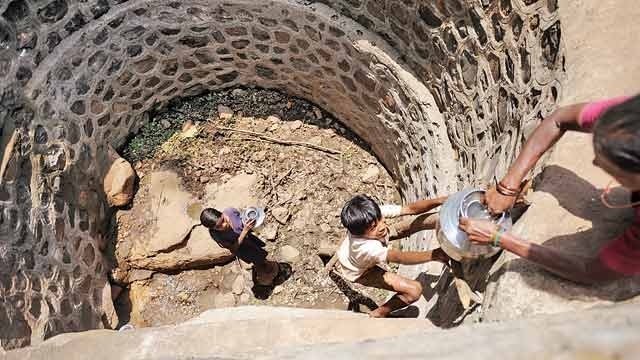The Sugarcane Mafia and Big Seed Multinationals Rob Marathwada of its Lifeline

NEW DELHI: The adage is there is darkness under the lamp. This holds true for the Marathwada region which is reeling under intense drought. Marathwada region produces roughly quarter of India’s sugar but presently it is facing severe shortage of drinking water and food.
The drought in the Marathwada region is due to the combination of multiple factors like poor water management, unbridled corruption, cultivation of water-intensive crops like sugarcane and Bt Cotton, and the absence of a long term policy and measures to manage water and drought.
Promotion of Sugarcane cultivation and Bt Cotton is not new to the region. Vandana Shiva, a noted environmental activist, in her research showed that like 1965 drought which was used to force the Green revolution in India, the 1975 drought in Maharashtra was used to promote sugarcane cultivation by the World Bank, which requires intensive irrigation based on tubewells and borewells.
Marathwada falls in the rain shadow region of the Western Ghats. It receives annual rainfall between 600-700 mm. Given the rocky field and soil only average 10 % water goes into ground to recharge well, which is insufficient. The region is part of a deficient river basin and can’t afford to cultivate water intensive crop. There is cause-effect between crop - sugarcane and Bt cultivation in Marathwada and the drought and farmers suicides.
Sugarcane is a water intensive crop and requires 1200 mm of water, which is roughly 20 times more than the annual recharge rate. It is simple mathematics to calculate that the rate of recharge of the groundwater is way below than the extraction. Of course, the region is now staring at famine.
The worst hit districts are Latur and Solapur, which got the media headlines not for the scarcity of water and the severe hardship the people are facing, but for receiving a water train after three years of steady drought. No measures, have been taken, to ensure long term relief leaving experts to point that the districts are not going to be free of drought and shortage of drinking water in the foreseeable future.
Latur, for instance, cultivates the largest amount of sugarcane in Marathwada. Latur has 45,000 hectares of land under sugar farming. However, it has only 7,000 hectares of land suitable for sugar farming; which implies indiscriminate use of groundwater to maintain this level of cultivation. According to Groundwater Surveys and Development Agency data, in 2016, there has been a depletion of 3 metres in groundwater levels in Latur.
Solapur, as per National Agriculture Research Project (NARP) classification of Agro-climatic zones of the country, fall under the scarcity zone MH-6 security zone. Still, this district houses the largest number of sugar factories - 32 in Maharashtra. Latur has 10 sugar mills of the 70 sugar factories in the Marathwada region.
Sugar factories have contributed considerably to the drought. As Pradeep Purandare, former expert member of the Maharashtra Development Board said, “it takes 25,000 litres of water to irrigate 1 kilogram of sugar”. He further pointed out that on an average, 25,00,000 litres of water are required to crush 2500 tonnes of sugar cane a day. The quantum of water needed for sugar farming industry is indicative of the intense pressure on groundwater.
Since 1995, more than 300,000 farmers have committed suicide in India. It is ironical that most of the suicides took place in Bt Cotton areas. Marathwada, in fact, is being labeled as the “suicide capital” of India.
Bt Cotton needs more water and it is also a fact that it fails if assured irrigation is not available. Therefore, Bt Cotton hybrids are not suited for water deficient regions like Marathwada and Vidarbha.
Bt toxins in Bt Cotton is a major factor which is destroying soil organisms and thereby, reducing the water-holding capacity of the soil. Bt toxin kills soil organism and eventually, it makes the soil sterile.
Thus, on the one hand sugarcane farming is consistently depleting the groundwater level and the other hand, Bt cotton is destroying water holding capacity of the soil by destroying its organism. The profit motive of private sugar mill’s owner and big seed multinationals like Monsanto, which is promoting Bt Cotton, have combined to push the region into a vicious cycle of drought. The apathy of the government, the high scale corruption and the indifference of the media have exacerbated the crisis that has assumed almost unmanageable proportions.



